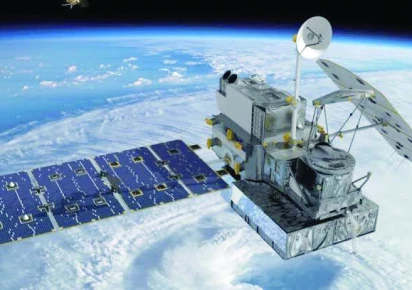

Next-Gen Satellite Launches to Transform Disaster Response, Agriculture, and Urban Planning.
Islamabad: Pakistan Space and Upper Atmosphere Research Commission has launched a new Remote Sensing Satellite.
Pakistan has successfully sent its new remote sensing satellite in to space, taking another important step in the field of space research. The satellite was launched from China’s Xichang Satellite Launch Center., developed by Pakistan’s Space Investigation Organization Suparco.
This satellite has the potential to get high quality data from different parts of the ground. According to experts, this satellite will play a significant role in the production of crops, urban proliferation, infrastructure monitoring and management of natural resources.
Timely predictions of natural disasters such as floods and earthquakes will be possible through satellite, while effective monitoring of glaciers’ melting and forest harvesting. In addition, this satellite will play a key role in assessing the effects of climate change.
Suparco officials say the development is a ray of a new hope in Pakistan’s scientific and technical sector, which will help in future development, better utilization of resources and environmental protection.
The satellite aligns with Pakistan’s National Space Policy and the Vision 2047 roadmap, which aims to elevate the country into the ranks of technologically advanced nations through innovation in space technology, told Suparco
This mission also reflects the growing maturity of Pakistan’s space program over the past decade. The journey was rekindled in 2011 with the launch of PakSat-1R — a communications satellite developed in close partnership with China. This was followed in 2018 by the launch of PakTES-1A and PRSS-1, which laid the groundwork for Earth observation and remote sensing capabilities.
A major breakthrough came in 2024 with PakSat-MM1, which delivered high-speed internet to underserved regions, helping bridge the digital divide and boosting national connectivity. That same year, the iCube Qamar — a CubeSat built by students at the Institute of Space Technology — captured stunning images of the Moon’s surface, showcasing the talent and vision of Pakistan’s next generation of space scientists on the global stage.
In January 2025, Pakistan reached another historic milestone with the successful launch of EO-1, the nation’s first fully indigenous electro-optical satellite. Designed and developed entirely by Pakistani engineers, EO-1 plays a vital role in supporting agriculture, environmental monitoring, and disaster management — a testament to the country’s growing technological self-reliance and its rising status in the space domain.






